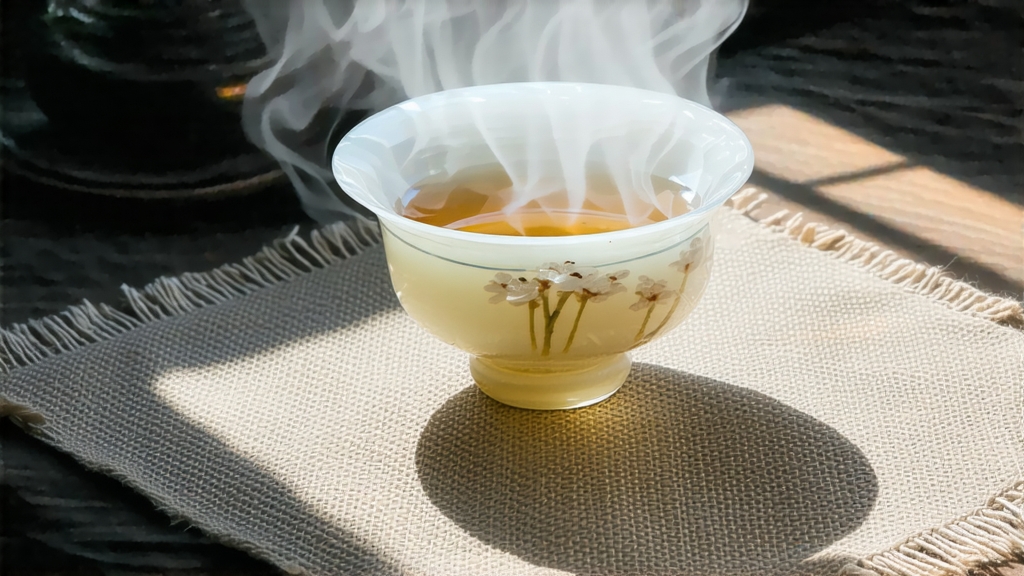
White Hair Silver Needle—Bai Hao Yin Zhen in Mandarin—is the most aristocratic expression of Chinese white tea. To the uninitiated it looks almost too delicate to be tea: a handful of slim, silvery spears that seem plucked from the moon rather than a Camellia sinensis bush. Yet each bud carries centuries of Fujianese craftsmanship, a whisper of sea-mist from the East China Sea, and a flavor so subtle it teaches the palate to listen.
-
Historical Echoes
The first verifiable record of “silver needle” appears in a 1796 county gazetteer from Fuding, but legend pushes the origin further back. Tea historians argue that Song-dynasty “white tribute cakes” shipped to the imperial court were compressed versions of early white tea. When loose-leaf fashion swept the Ming court, the cakes fell out of favor, yet the idea of celebrating the unopened bud survived. By the late Qing, Fuding and Zhenghe counties competed to produce the fluffiest, most uniform needles for export through the treaty port of Fuzhou. European tea brokers nicknamed the grade “Flowery Pekoe Tips,” a label that still surfaces in vintage auction catalogues. The 1915 Panama-Pacific International Exposition awarded a Silver Medal to Fuding Yin Zhen, sealing its global reputation. -
Terroir and Harvest Calendar
Authentic Silver Needle is born in northern Fujian’s narrow coastal plain where red granitic soils meet a maritime climate. Day-night temperature swings of 10 °C coax the tea bush into hoarding amino acids; morning fog acts as a natural shade cloth, slowing photosynthesis and thickening the down on each bud. Only the spring flush—usually a 10-day window straddling Qingming Festival—qualifies for top-grade Yin Zhen. Pickers work at dawn when dew still beads on the bud, because surface moisture prevents the tiny hairs from breaking off. One skilled plucker gathers roughly 2,000 buds an hour; 30,000 buds equal one liang (50 g) of finished tea. -
Craftsmanship: The Art of Doing Almost Nothing
Unlike green tea that is pan-fired or oolong that is bruised, white tea is coaxed rather than cooked. The traditional two-step protocol sounds deceptively simple: wither, then dry. Yet within those verbs lie micro-decisions that separate mediocrity from transcendence.
Withering: Buds are laid on bamboo trays stacked like screens in a gentle breeze. For the first 24 hours ambient temperature is held at 22–26 °C; relative humidity hovers around 70%. Enzymes nibble at bitter catechins, converting them into sweeter theaflavins while chlorophyll quietly degrades into phaeophytin, lending the dried leaf its characteristic silver-green color.
Drying: Once the bud’s moisture drops to 10–12%, the trays are moved to a charcoal-warmed loft. The firing is brief—no hotter than 40 °C—to lock in fragrance without caramelizing sugars. Modern facilities use electric ovens calibrated to mimic the infrared spectrum of embers, but the finest village lots are still finished over dying lychee-wood coals whose resin perfumes the air.
-
Grading Nuances
Chinese national standard GB/T 22291-2017 recognizes only two formal grades: Special Grade and Grade 1. In practice, however, connoisseurs speak of three micro-grades determined by bud plumpness and down density. “King Needle” buds exceed 3 cm in length and stand upright when dropped into water; “Queen Needle” tips curve slightly like a fishing hook; “Common Needle” contains shorter buds harvested in the last two days of the plucking window. -
Chemical Poetry
Laboratory analysis reveals why Silver Needle tastes almost aqueous yet lingers for minutes. Its theanine level averages 4.2 %—double that of spring Longjing—while caffeine stays modest at 2.8 %. The high ratio of amino acids to polyphenols produces a brothy sweetness reminiscent of kombu dashi. A faint note of white peach comes from (Z)-3-hexenyl hexanoate, a volatile ester formed during the slow wither. -
Brewing: A Ritual of Respect
Silver Needle is forgiving—it will not turn bitter—but to unlock its full aria one must respect its fragility.
Water: Start with soft, neutral spring water; hard minerals scald the down and flatten aroma. Bring to